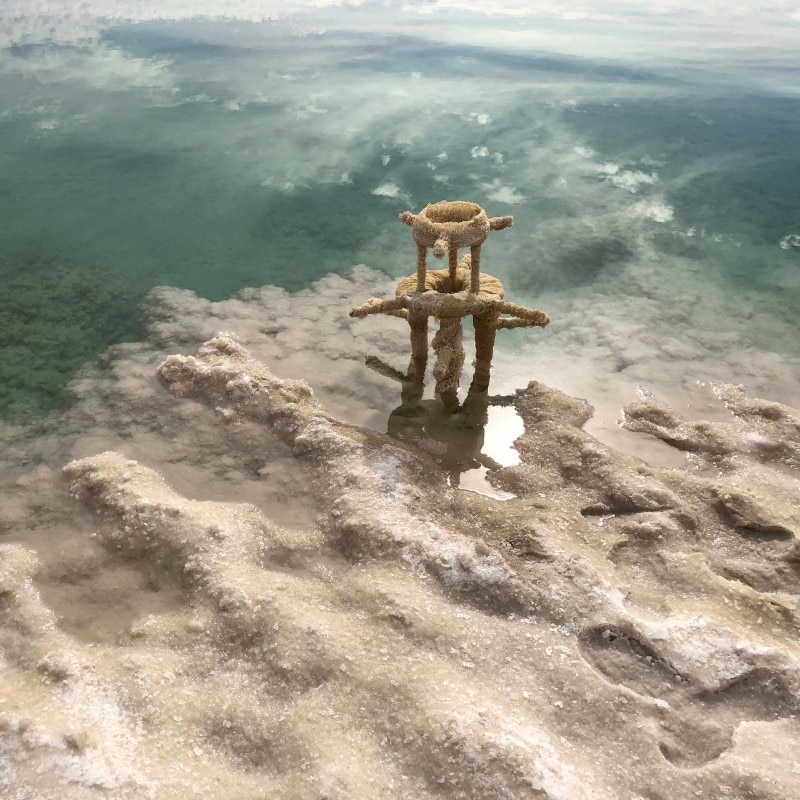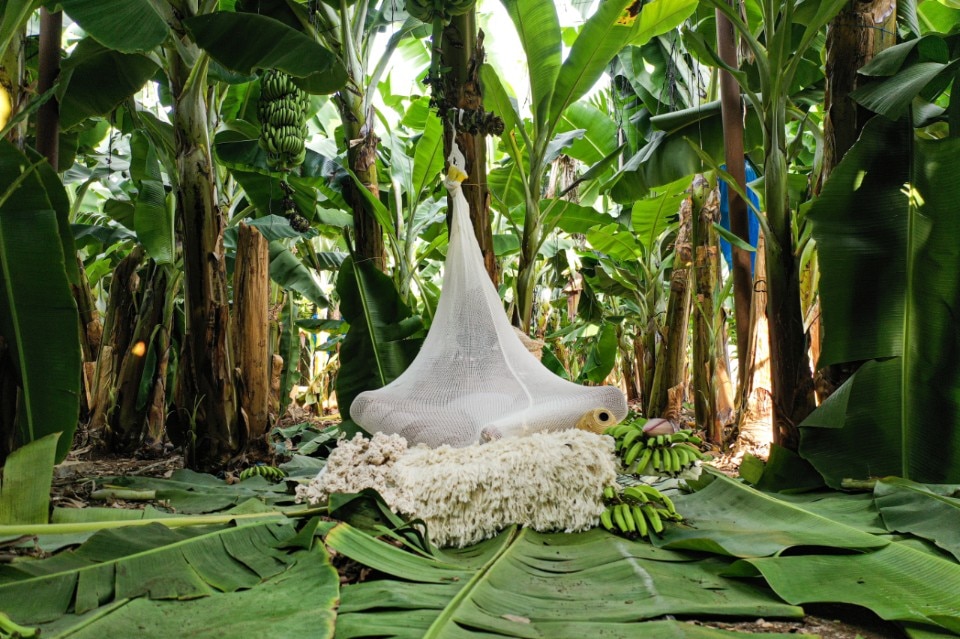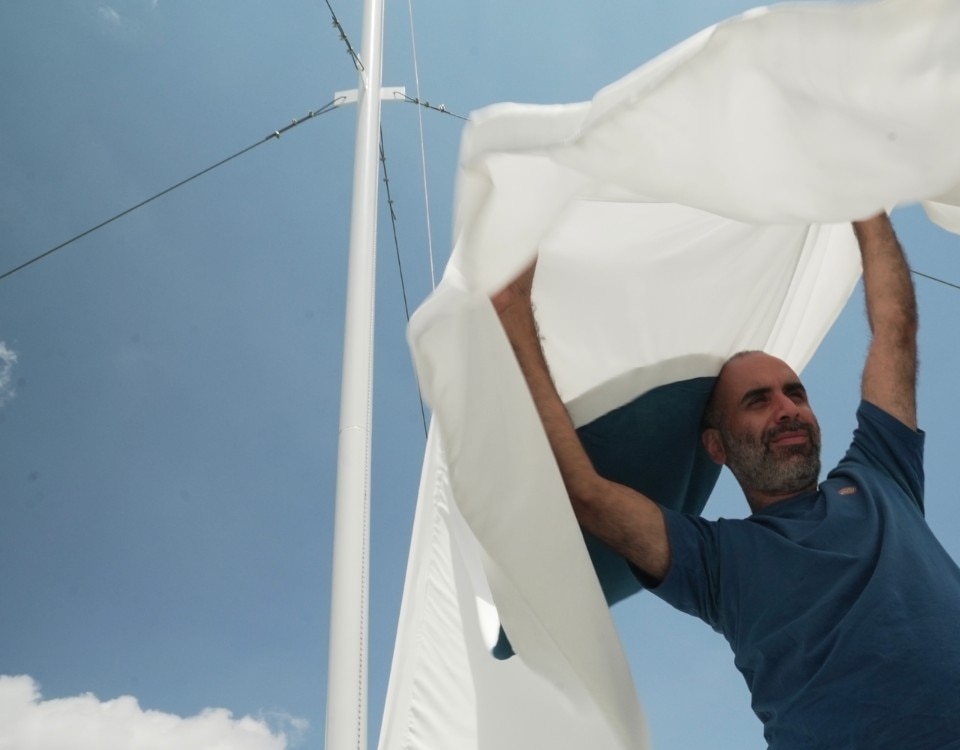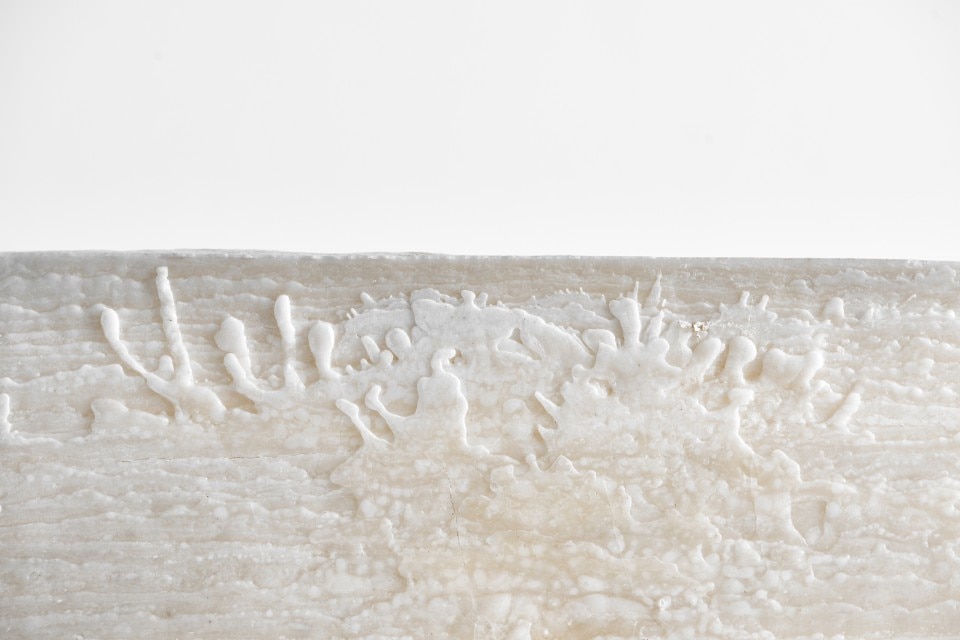While veganism is gradually being embraced in the world of food, it’s still far from mainstream in the production of objects and furniture. This is largely due to the widespread use of materials like leather and the less obvious use of animal-derived components – think of glue, for example. However, some have been conducting radical, ethical research for years to identify cruelty-free alternatives throughout the design supply chain. One of the leading pioneers in this field is undoubtedly Erez Nevi Pana. A passionate advocate for animal rights and an often provocative spokesperson for rethinking production through a cruelty-free lens, Pana first turned heads as a student at the Design Academy Eindhoven. It was 2015 when he unveiled a series of stools held together by vegan glues and left to macerate in the salts of the Dead Sea.
I started growing my own materials on the rooftop of my studio as a way to control the origin of the materials I use for my objects
Erez Nevi Pana

Over the past decade, Pana’s work has remained steadfast in this direction. For example, he developed a hemp-based paper free of animal components, which he used to write his Ph.D. thesis at the University of Linz (Paper, 2018). He has also created a series of textiles made entirely from plant fibers – banana, bamboo, flax, hemp, cotton, seaweed, lotus – that are capable of replacing wool (Ripening, 2024).
But to reduce his work to simply creating a catalog of alternative materials would be a disservice. Pana’s approach goes much deeper, blending conceptual rigor with spiritual inquiry. Take Wasted (2017), for example – a series of baskets crafted from molds he made by assembling his own waste during a stay in India. Or Flora Fauna (2021), a series of plants given the scientific names of animals, creating a metaphorical circus liberated from exploitation.

Recently, Pana’s advocacy for animal rights has expanded into the nuanced realm of sustainability. “This is where I stand today: questioning everything and considering everyone,” he tells Domus. “I started growing my own materials on the rooftop of my studio as a way to control the origin of the materials I use for my objects. For instance, I used to buy loofahs and wonder: Where did they come from? What land were they grown on? How were they harvested? How much were the workers paid if they're so cheap to buy? These questions drove me crazy. I felt responsible as a consumer, so I decided to grow my own. Today, I feel satisfied knowing that these doubts contribute to my growth, both as a designer and as a human being.”
Many industries have replicated natural aesthetics with artificial materials, so why not revert to the natural state? We need more authentic designs that are mindful of our planet
Erez Nevi Pana

Beyond fully tracing the supply chain, Pana is also benefiting from a favorable climate of discussion around interspecies ethics and new plant-based materials. This context is enabling him to broaden the scale of his impact. Industry attention to vegan materials, Pana confirms, is at an all-time high.
A prime example is the annual vegan product competition launched by PETA, the world’s largest animal rights organization, where multinationals now flock to discover new proposals that can be commercialized. While Pana welcomes this attention, he is also wary of the risk of greenwashing, particularly through global supply chains that remain environmentally harmful.

“The first decade of my work was primarily focused on experimental approaches. The next decade should be about deepening connections with commercial markets. To embrace the vegan lifestyle, consumers should have access to vegan designs. It is a bit naive to dedicate everything to experimentation and conceptual work.
I want to partner with design brands to scale my research and create customized techniques using local, ethical materials. Many industries have replicated natural aesthetics with artificial materials, so why not revert to the natural state? We need more authentic designs that are mindful of our planet.” Erez Nevi Pana’s work is currently on display in the first monographic exhibition dedicated to the designer, Every Thing (curated by Maria Cristina Didero), at the Museum on the Seam in Jerusalem.
- Exhibition:
- Every Thing, Erez Nevi Pana
- Curated by:
- Maria Cristina Didero
- Location:
- Museum on the Seam, Jerusalem, Israel
- Dates:
- from 19th July until 13th December 2024

Innovation and sustainability in building materials
The new range of lime-based thermal plasters by Röfix is designed to provide advanced insulation solutions.














